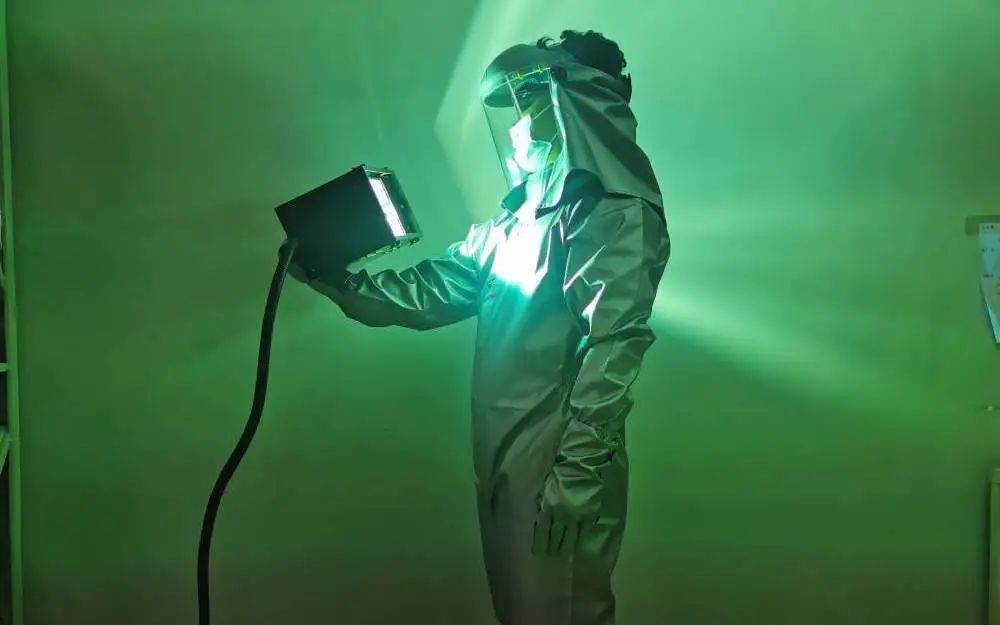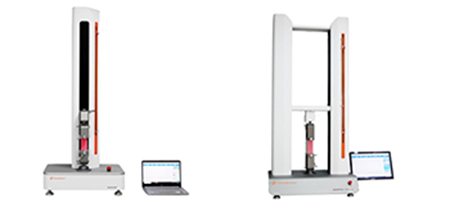Coated fabric: It is a kind of fabric treated by special technology. It can…
Introduction Temperature humidity chamber
Introduction Temperature humidity chamber
A temperature humidity chamber is a testing device that can create controlled environments with precise temperature and humidity levels. These chambers are commonly used in research, development, and quality control processes to test the effects of various environmental conditions on materials, products, and components.

The chamber can simulate a wide range of temperature and humidity conditions, including extreme hot and cold temperatures, high and low humidity levels, and rapid changes in temperature and humidity. This enables researchers and manufacturers to test how their products perform in different environmental conditions and to identify potential weaknesses or areas for improvement.
Temperature humidity chambers are widely used in electronics, aerospace, pharmaceuticals, and automotive industries, among others. They play a critical role in ensuring that products are safe, reliable, and able to withstand the challenges of real-world environments.
What is the temperature of the humidity chamber?
The temperature of a humidity chamber can vary depending on its design and purpose. Generally, these chambers can produce a wide range of temperatures, from sub-zero to over 100 degrees Celsius.
Some temperature humidity chambers are designed to operate within a specific temperature range, such as -70°C to +180°C, while others can reach even higher temperatures. Similarly, the humidity level of a chamber can also vary, with some capable of producing humidity levels ranging from 10% to 98%.
The specific temperature and humidity settings used in a chamber will depend on the testing requirements and the materials or products being tested. It’s important to carefully select the appropriate temperature and humidity settings to ensure accurate and reliable testing results.
What is the purpose of the temperature humidity chamber?
The purpose of a temperature humidity chamber is to create controlled environments with precise temperature and humidity levels. These chambers are used for a variety of testing and research purposes, including:
1.Product testing: Temperature humidity chambers are commonly used to evaluate how materials, products, and components perform under different environmental conditions. For example, a manufacturer might use a section to test the durability and performance of electronic components or automotive parts in extreme temperatures or humid conditions.
Quality control: Temperature humidity chambers are also used in quality control processes to ensure that products meet specific standards and requirements. By subjecting products to various environmental conditions, manufacturers can identify any defects or weaknesses and make necessary improvements before the products are released.
2.Research and development: Temperature humidity chambers are used in research and development to study the effects of environmental conditions on various materials and products. Researchers can use these chambers to simulate different environments and test the performance of materials or products under those conditions.
3.Climate testing: Temperature humidity chambers are used for climate testing, which involves subjecting products to a series of environmental conditions that mimic climate changes over time. This type of testing is essential for products designed to withstand long-term exposure to environmental conditions, such as outdoor equipment and structures.
The purpose of a temperature humidity chamber is to provide a controlled testing environment that can simulate various temperature and humidity conditions to evaluate how materials, products, and components perform under those conditions.
How Temperature Humidity Chambers Work
Temperature humidity chambers create a controlled environment that can simulate different temperature and humidity conditions. Here’s a brief overview of how these chambers work:
1.Control system: A temperature humidity chamber is equipped with a control system that regulates the temperature and humidity levels inside the room. The control system can be programmed with specific temperature and humidity settings and will adjust the chamber’s internal conditions to achieve and maintain those settings.
2.Heating and cooling system: The chamber is equipped with a heating and cooling system to regulate temperature. This system may use a combination of heaters, refrigeration systems, and fans to adjust the temperature as needed.
3.Humidity control system: The chamber is equipped with a humidity control system to regulate humidity. This system may use a combination of water reservoirs, heaters, and fans to adjust the humidity levels as needed.
4.Sensors: The chamber has sensors that measure the temperature and humidity levels. These sensors send feedback to the control system, which adjusts the chamber’s conditions to maintain the programmed settings.
5.Test samples: The tested samples are placed inside the chamber, and their performance is evaluated as the temperature and humidity levels vary. Researchers can identify how they will perform in real-world environments by subjecting samples to different temperature and humidity conditions.
6.Temperature humidity chambers create a controlled testing environment to simulate different temperature and humidity conditions. These chambers are critical for testing the performance and durability of materials, products, and components under other environmental conditions.

Applications of Temperature Humidity Chambers in Industry.
Temperature humidity chambers are widely used in industry for a variety of applications. Here are some typical applications of temperature humidity chambers in the industry:
1.Electronics industry: Temperature humidity chambers are commonly used in the electronics industry to test the performance and durability of electronic components and devices under different temperature and humidity conditions. For example, a manufacturer might use a chamber to test the impact of temperature and humidity on the reliability of printed circuit boards, microchips, and other electronic components.
2.Automotive industry: The automotive industry uses temperature humidity chambers to test the durability and performance of automotive components and systems, such as engines, transmissions, and electronic controls. These chambers can simulate various environmental conditions, including extreme temperatures and humidity, to ensure that components and systems perform reliably in real-world situations.
3.Aerospace industry: Temperature humidity chambers are used in the aerospace industry to test the performance and reliability of aerospace components and systems under different environmental conditions. These chambers are critical for ensuring the safety and reliability of spacecraft, satellites, and other aerospace vehicles.
4.Medical industry: Temperature humidity chambers are used in the medical industry to test the durability and reliability of medical devices and equipment, such as surgical instruments and implantable devices. These chambers can simulate different environmental conditions, including high humidity and temperature, to evaluate the impact of these conditions on the performance of medical devices.
5.Building materials industry: The building materials industry uses temperature humidity chambers to test the durability and performance of construction materials, such as roofing materials and insulation, under different environmental conditions. These chambers can simulate different temperature and humidity conditions to evaluate building materials’ performance in real-world situations.
6.Temperature humidity chambers are widely used in industry for testing the performance and durability of materials, products, and components under different environmental conditions. These chambers are critical for ensuring that products are reliable, durable, and safe for various applications.
How Temperature Humidity Chamber help businesses
Temperature humidity chambers can be incredibly beneficial to businesses in various ways. Here are some ways that temperature humidity chambers can help enterprises:
1.Quality control: Temperature humidity chambers can help businesses maintain consistent product quality by testing products under various temperature and humidity conditions. By identifying any issues that arise during testing, companies can make necessary improvements to their products to ensure that they perform as intended in real-world situations.
2.Cost savings: Temperature humidity chambers can help businesses save money by identifying potential product failures early in development. By identifying issues early on, companies can make necessary changes to the design or manufacturing process, avoiding costly product recalls or repairs down the line.
3.Competitive advantage: By using temperature humidity chambers to test and improve their products, businesses can gain a competitive advantage over other companies. High-quality, reliable products that perform well under different environmental conditions can help enterprises to stand out in a crowded marketplace.
4.Innovation: Temperature humidity chambers can help businesses innovate and develop new products that perform better under different environmental conditions. Companies can identify opportunities to improve their products and create new, innovative solutions by testing other materials and components under different temperature and humidity conditions.
5.Compliance: Temperature humidity chambers can help businesses ensure that their products meet industry and regulatory standards for performance and safety. By testing products under different environmental conditions, companies can demonstrate that their products meet or exceed the required standards, ensuring that they are safe and effective for use in their intended applications.
6.Temperature humidity chambers can be special tools for businesses in various industries. By testing products under different environmental conditions, companies can ensure they are high-quality, reliable, and safe for use while identifying opportunities for innovation and cost savings.
How long does creating a controlled environment with precise temperature and humidity levels in a temperature-humidity chamber take?
The time it takes to create a controlled environment with precise temperature and humidity levels in a temperature-humidity chamber can vary depending on several factors, including the size of the section, the ambient conditions of the testing environment, and the accuracy of the temperature and humidity control systems.
Generally, most temperature-humidity chambers are designed to reach the desired temperature and humidity levels within a few hours. The exact time required to achieve these levels will depend on the specific conditions inside the chamber and the capacity of the control system.
For example, if the chamber is large and the ambient conditions significantly differ from the desired conditions, it may take longer to reach the desired temperature and humidity levels. Similarly, if the control system is not highly accurate, it may take longer for the chamber to achieve and maintain the desired conditions.
While providing a specific time frame for how long it takes to create a controlled environment with precise temperature and humidity levels in a temperature-humidity chamber is difficult, most sections are designed to reach the desired conditions relatively quickly, typically within a few hours.

Are there any risks or safety concerns associated with using temperature-humidity chambers?
Yes, some risks and safety concerns are associated with using temperature-humidity chambers. Some of these concerns include:
1.Electrical hazards: Temperature-humidity chambers require electricity to power their heating and cooling systems, which can pose an electrical threat if proper precautions are not taken. Ensuring the section is properly grounded and all electrical components are in good working condition is essential.
2.Fire hazards: Temperature-humidity chambers use heating and cooling elements, which can become hot and potentially cause a fire if they malfunction. It is essential to regularly inspect and maintain the chamber’s heating and cooling systems to minimize this risk.
3.Exposure to harmful substances: Some temperature-humidity chambers are used to test the impact of extreme temperatures and humidity on materials and components. If these materials or components contain toxic substances, there may be a risk of exposure during testing. It is vital to ensure that all materials and components being tested are safe and non-toxic.
4.Operator error: The accurate operation of a temperature-humidity chamber is critical to achieving reliable test results. However, operator error can cause the section to operate outside its desired temperature and humidity range, leading to inaccurate or misleading test results.
5.Mechanical hazards: Temperature-humidity chambers typically have moving parts, such as fans and motors, which can pose an automatic threat if proper safety precautions are not taken. It is essential to ensure that all moving parts are adequately guarded and that operators are trained on the safe use of the chamber.
6.While temperature-humidity chambers are generally safe when operated correctly, some risks and safety concerns must be addressed to ensure safe and reliable operation. It is essential to follow all manufacturer instructions and safety guidelines, regularly inspect and maintain the chamber, and train all operators on safe use and process.
What is the price of a climate chamber?
The average price of a climate chamber can vary widely depending on several factors, including the size of the section, the temperature and humidity range it can achieve, the level of accuracy and control it provides, and any additional features it may have.
For small, basic models, prices can start at around USD 1,000. In contrast, larger, more advanced models with precise temperature and humidity control and a more comprehensive temperature range can cost tens of thousands or more.
A mid-range temperature humidity chamber suitable for most industrial testing applications can cost between $5,000 to USD 20,000. However, it is essential to remember that the cost of a temperature humidity chamber is just one factor to consider when selecting a section. Other factors, such as performance, reliability, and accuracy, are equally essential when choosing a chamber for your specific testing needs.




This Post Has 0 Comments